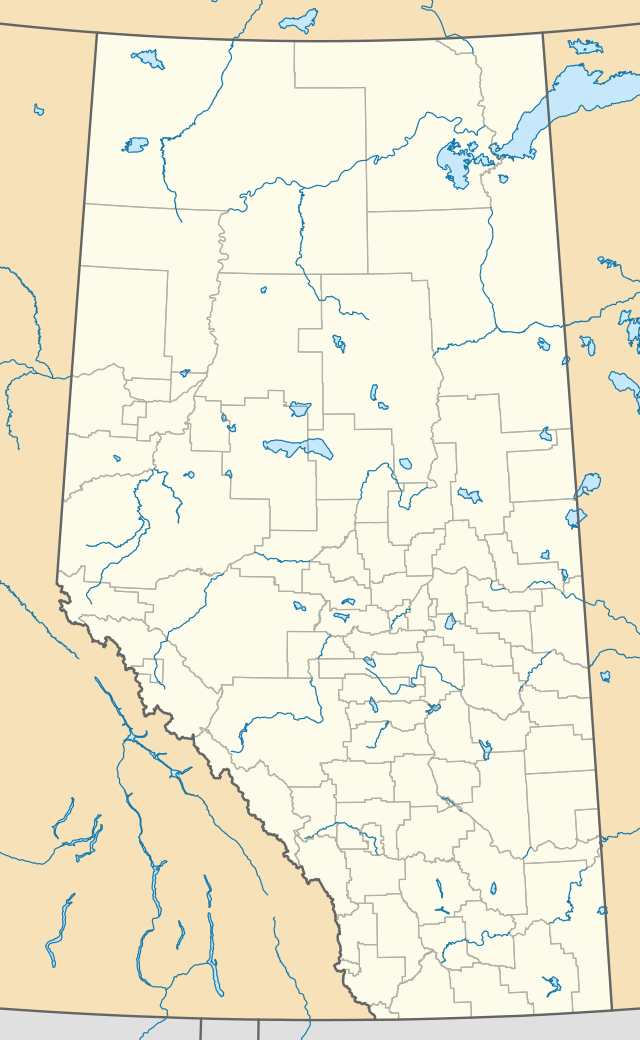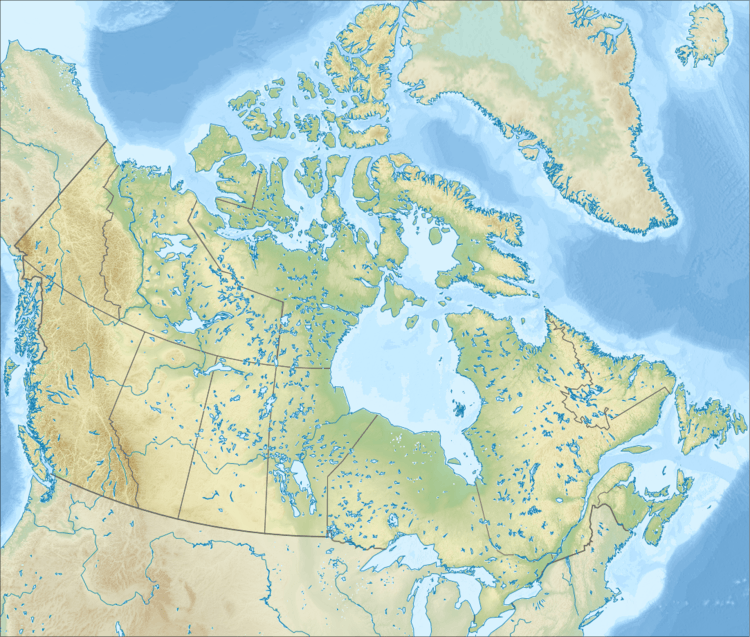Mount Bosworth
Mount Bosworth is located in the Canadian Rockies on the border of Alberta and British Columbia. The mountain is situated immediately northwest of Kicking Horse Pass and straddles the shared border of Banff National Park with Yoho National Park. It was named in 1903 after George Morris Bosworth, an executive and long-time employee of the Canadian Pacific Railway.[1][2][4]
| Mount Bosworth | |
|---|---|
 Mount Bosworth reflected in Herbert Lake | |
| Highest point | |
| Elevation | 2,769 m (9,085 ft) [1] |
| Prominence | 159 m (522 ft) [2] |
| Coordinates | 51°27′53″N 116°20′01″W [3] |
| Geography | |
 Mount Bosworth Location in Alberta and British Columbia  Mount Bosworth Mount Bosworth (Canada) | |
| Location | Alberta / British Columbia |
| Parent range | Park Ranges Canadian Rockies |
| Topo map | NTS 82N/08 |
| Climbing | |
| First ascent | 1903 Dominion Topographic Survey[2] |
| Easiest route | Scrambling Routes |
Geology
Mount Bosworth is composed of sedimentary rock laid down during the Precambrian to Jurassic periods.[5] Formed in shallow seas, this sedimentary rock was pushed east and over the top of younger rock during the Laramide orogeny.[6]

Climate
Based on the Köppen climate classification, Mount Bosworth is located in a subarctic climate with cold, snowy winters, and mild summers.[7] Temperatures can drop below −20 °C with wind chill factors below −30 °C.
See also
- List of peaks on the British Columbia-Alberta border
- List of mountains of Alberta
- Mountains of British Columbia
References
- "Mount Bosworth". PeakFinder.com. Retrieved 2019-08-20.
- "Mount Bosworth". Bivouac.com. Retrieved 2010-02-11.
- "Mount Bosworth". BC Geographical Names. Retrieved 2013-06-29.
- Boles, Glen W.; Laurilla, Roger W.; Putnam, William L. (2006). Canadian Mountain Place Names. Vancouver: Rocky Mountain Books. p. 47. ISBN 978-1-894765-79-4.
- Belyea, Helen R. (1960). The Story of the Mountains in Banff National Park (PDF). parkscanadahistory.com (Report). Ottawa: Geological Survey of Canada. Archived (PDF) from the original on 2015-10-02. Retrieved 2019-09-13.
- Gadd, Ben (2008). Geology of the Rocky Mountains and Columbias.
- Peel, M. C.; Finlayson, B. L. & McMahon, T. A. (2007). "Updated world map of the Köppen−Geiger climate classification". Hydrol. Earth Syst. Sci. 11: 1633–1644. ISSN 1027-5606.